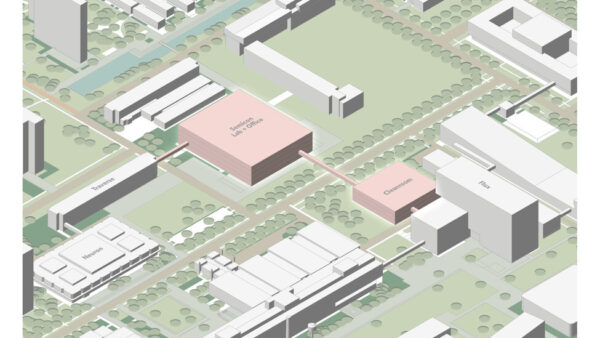A consortium of consultants called Studio Ord has been selected by the City of Chicago to design the $2.2bn expansion of O’Hare International Airport.
The expansion will be funded by the airport, and will include a 204,000 sq m Global Terminal. This will contain an arrivals hall with additional gates that incorporates international and domestic flights under one roof.
From above, the terminal has the form of Chicago’s “Y” symbol (representing the three branches of the Chicago River), and has Y-shaped columns spread 30m apart to increase circulation. Greenery will be included in each of the terminal’s three branches, which will also contain restaurants and shops that aim to create the atmosphere of a “lively Chicago neighbourhood street”.

Studio Ord is made up of US architects Studio Gang, Solomon Cordwell Buenz and STL Architects and Corgan, as well as and Milhouse Engineering and Construction. All the firms, with the exception of Corgan, are based in Chicago.
A shortlist of five teams was announced for the project in November 2018, and included architects such as Skidmore, Owings & Merrill, Foster + Partners and Santiago Calatrava.
Later this year a second team will be selected from the remaining four finalists to design two satellite concourses, which will be built west of Terminal One.
Work on the $2.2bn O’Hare Global Terminal is due to begin in 2023. A press release states that the airport will work with the city throughout the full $8.5bn project.

Rahm Emanuel, mayor of Chicago, said: “The City of Chicago called upon teams from across the city and around the world to lead O’Hare’s historic expansion, and Studio Ord answered that call. It has proven it has the experience, expertise, and the talent needed to work with the City of Chicago as we usher in a new era at O’Hare.”
Jeanne Gang, lead designer of the project, said: “Every aspect of the design is focused on creating a uniquely Chicago experience. It embodies the city’s fundamental geographic asset: a place of convergence of paths of movement both natural and man-made. Its exposed structure, interior streets, and bustling activity express our city’s trajectory as a centre of movement, exchange, and growth.”
Images courtesy of Studio Ord/Studio Gang










